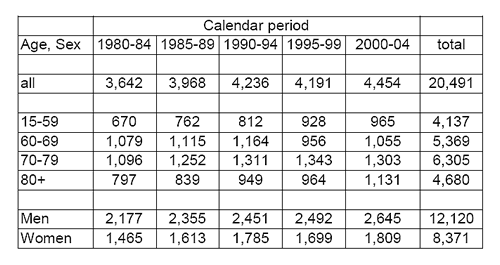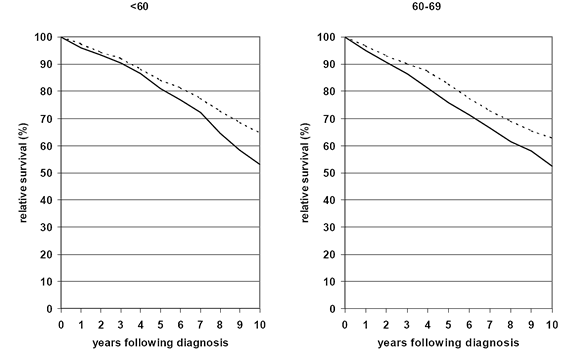 |
||||||||||
Date: March 2, 2026
by Chaya Venkat

The journal Blood has just published an article on long-term survival statistics for CLL patients. The article abstract is below – and by now you know what you have to do if you want to read the full text of the article, right?
Blood First Edition Paper, prepublished online February 28, 2026; DOI 10.1182/blood-2007-12-129379
Trends in long-term survival of patients with chronic lymphocytic leukemia from the 1980s to the early 21st century
Hermann Brenner*, Adam Gondos, and Dianne Pulte
Division of Clinical Epidemiology and Aging Research, German Cancer Research Center, Heidelberg, Germany Weill Cornell Medical Center, New York, NY.
Although chronic lymphocytic leukemia (CLL) has remained incurable with standard treatments, newer therapeutic approaches, such as chemoimmunotherapy or stem cell transplantation bear the potential for prolonged survival. We estimated trends in age specific 5- and 10-year absolute relative survival of CLL patients in the United States from 1980-1984 to 2026-2004 from the 1973-2004 data base of the Surveillance, Epidemiology, and End Results (SEER) Program. Period analysis was employed to disclose recent developments with minimum delay. Overall, 5-and 10-year absolute survival from diagnosis increased from 54.2% to 60.2% (+6.0 percent units, p<0.0001), and from 27.8% to 34.8% (+7.0 percent units, p<0.0001), respectively. Despite a strong age gradient in prognosis, increases in 5-year absolute and relative survival over time were rather homogeneous across age groups. By contrast, increases in 10-year absolute and relative survival close to or well above 10 percent units were observed for all patients below 80 years of age at diagnosis, compared to no increase at all for older patients. Long-term survival expectations of patients with CLL have substantially improved over the past two decades except for patients aged 80 or older at the time of diagnosis. Future studies are needed to confirm and expand our findings.
This detailed statistical analysis of CLL patient survival is based on data from the SEER (Surveillance, Epidemiology, and End Results) Program. The SEER program collects population based data from cancer registries in Connecticut, New Mexico, Utah, Iowa, Hawaii, Atlanta, Detroit, Seattle-Puget Sound and San Francisco-Oakland. While it does not cover the whole of USA, SEER includes about 30 million people in its scope and therefore has pretty powerful statistical validity. Roughly 21,000 CLL patients (15 years or older) were included in this specific study, time frame was 1973 – 2026. For those of you who like to have your facts as sound-bites, here is the cheat-sheet version of the findings reported in this study.

Numbers of patients with CLL by age group, sex and calendar period. Source: Blood.
When all is said and done, this is what matters most to patients and their families: are our guys living any longer now than they did back in the 80's? The two graphs below are excerpted from the Blood article, and they show how survival statistics have changed from the 1980-84 time frame to 2026-04.

Ten-year relative survival curves of patients with CLL by major age groups.
Period estimates for 1980-1984 (solid lines) and 2026-2004 (dashed lines).
___________
I guess it is good to have all these statistics sorted out and available in one place. Shoot, I doubt Blood would have been interested in publishing my layperson 2 cents, but none of this comes as a huge surprise to me. How about you?
 Enter Keywords: |
———
Disclaimer: The content of this website is intended for information only and is NOT meant to be medical advice. Please be sure to consult and follow the advice of your doctors on all medical matters.
Copyright Notice:
Copyright © 2026-2007 CLL Topics, Inc. All Rights Reserved.
All materials contained on this site are protected by United States copyright law and may not be reproduced, distributed, transmitted, displayed, published or broadcast without the prior written permission of CLL Topics, Inc. You may not alter or remove any trademark, copyright or other notice from copies of the content.
However, you may download and print material from CLLTopics.org exclusively for your personal, noncommercial use.
———
